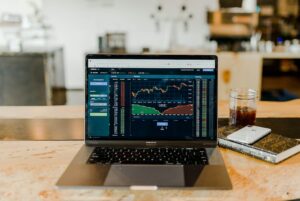Introduction:
Forex, also known as foreign exchange or FX, is the global marketplace for trading currencies. It is the largest and most liquid financial market in the world, with trillions of dollars being traded daily. Forex trading involves buying one currency and selling another simultaneously, with the aim of making a profit from the fluctuations in exchange rates. However, successful forex trading requires more than just luck or intuition. It requires a solid understanding of how forex works, effective risk management, and the development of a trading strategy. In this article, we will delve into these aspects of forex trading and provide valuable insights for beginners.
Managing Risk:
One of the most critical aspects of forex trading is managing risk. Forex markets are highly volatile, and prices can fluctuate rapidly. Therefore, it is essential to have a risk management plan in place to protect your capital and limit potential losses. Here are some key risk management techniques to consider:
1. Setting Stop Loss Orders: A stop loss order is an instruction to close a trade at a predetermined price level to limit losses. By setting a stop loss, you define the maximum amount you are willing to lose on a trade. It is crucial to set stop losses based on a careful analysis of market conditions and your risk tolerance.
2. Using Leverage Wisely: Leverage allows traders to control larger positions with a smaller amount of capital. While leverage can amplify profits, it can also magnify losses. It is important to use leverage responsibly and avoid overexposing your account. Understanding the risks associated with leverage and using it judiciously can help mitigate potential losses.
3. Diversifying Your Portfolio: Diversification is a risk management technique that involves spreading your investments across different currency pairs and other asset classes. By diversifying, you reduce the impact of any single trade or currency pair on your overall portfolio. This can help minimize the risk of significant losses.
Developing a Trading Strategy:
A trading strategy is a set of rules and guidelines that govern your trading decisions. It helps you identify potential trading opportunities and manage your trades effectively. Here are some key elements to consider when developing a trading strategy:
1. Fundamental Analysis: Fundamental analysis involves evaluating economic indicators, news events, and geopolitical factors that can impact currency prices. By staying informed about macroeconomic trends and events, you can make more informed trading decisions.
2. Technical Analysis: Technical analysis involves analyzing historical price data and using various indicators and chart patterns to predict future price movements. It helps traders identify trends, support and resistance levels, and potential entry and exit points. Learning technical analysis techniques can be invaluable in developing a trading strategy.
3. Money Management: Money management is a crucial aspect of any trading strategy. It involves determining the appropriate position size for each trade based on your risk tolerance and account size. Effective money management ensures that you can withstand losses and continue trading even during periods of drawdown.
4. Backtesting and Demo Trading: Before implementing a trading strategy with real money, it is advisable to backtest it using historical data and demo trade it in a simulated trading environment. Backtesting allows you to evaluate the strategy’s performance and make necessary adjustments. Demo trading helps you gain experience and confidence in executing trades.
Conclusion:
Forex trading can be a rewarding endeavor if approached with the right knowledge and skills. By understanding how forex works, managing risk effectively, and developing a trading strategy, you can increase your chances of success in the forex market. Remember that forex trading involves inherent risks, and no strategy can guarantee profits. It is crucial to continuously educate yourself, adapt to market conditions, and be disciplined in following your trading plan. With dedication and practice, you can navigate the complexities of forex trading and potentially achieve your financial goals.






